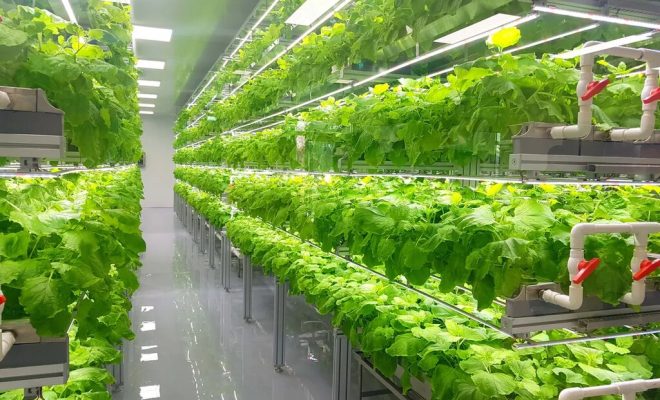Vertical Farming: How Technology Is Changing the Future of Agriculture

In the face of growing urbanization and increasing concerns over land and water scarcity, sustainable agricultural practices have become crucial to addressing future challenges. With 80% of the world’s projected population living in urban areas by 2050, effective local food production will require innovative strategies. One such strategy is vertical farming: a multi-layered, indoor method that increases crop yield while requiring less space, water, and energy resources.
Vertical Farming: A Modern Solution for Urban Agriculture
Vertical farming is a practice that grows crops indoors using vertically stacked layers. It offers various benefits compared to traditional farming methods:
1. Reduced Land Usage: By stacking crops vertically, vertical farming significantly reduces the amount of land required for agriculture, opening space for other purposes such as housing or recreational areas.
2. Year-Round Production: Crops grown in a controlled indoor environment can be produced year-round, regardless of seasonal weather variations.
3. Lower Water Consumption: Vertical farming uses up to 90% less water than traditional methods due to highly efficient hydroponic or aeroponic technologies, which recycle and reuse water within the system.
4. Pesticide-Free Farming: The controlled environment eliminates the need for chemical pesticides and herbicides by providing an environment inhospitable to pests and diseases.
5. Reduced Transportation Emissions: Locally grown produce eliminates or significantly reduces the need for long-distance shipping, thereby reducing associated greenhouse gas emissions.
The Role of Technology in Vertical Farming
The advancement of several key technologies has enabled vertical farming to become more accessible and efficient:
1. Controlled Environment Agriculture (CEA): CEA technology allows farmers to maintain an optimal environment for crop growth year-round by controlling humidity, temperature, CO2 levels, airflow, and light spectra.
2. LED Lighting Systems: Highly energy-efficient LED lights have replaced traditional lighting sources in vertical farms, allowing growers to mimic sunlight and adjust the intensity, duration, and wavelengths required for specific crops.
3. Hydroponics and Aeroponics: These soilless growing systems deliver tailored nutrient solutions directly to plant roots, maximizing nutrient absorption while minimizing water consumption.
4. Crop Monitoring and Data Analytics: Advanced sensor technology and machine-learning algorithms allow farmers to monitor plant health, growth rates, and nutrient levels in real-time, making adjustments whenever necessary to optimize production.
Challenges and Prospect
While vertical farming has numerous advantages, it is not without its challenges. Currently, the sizeable upfront cost of establishing a vertical farm can be prohibitive. However, as technologies advance and with economies of scale in play, prices are expected to decrease.
Additionally, not all crops are suitable for vertical farming. Traditional soil-based farming will still be necessary for items such as tubers and some grain crops. Furthermore, public perception of vertical farming may require time to change as people become more familiar with the practice.
Conclusion
Vertical farming is a promising solution that could revolutionize the future of agriculture. By overcoming constraints of traditional agricultural methods while promoting sustainable practices, this innovative approach holds the potential to address future food supply challenges in a rapidly urbanizing world. As technology advances and costs decrease, vertical farms may become increasingly common within cityscapes – helping communities grow more food locally while minimizing environmental impacts.





